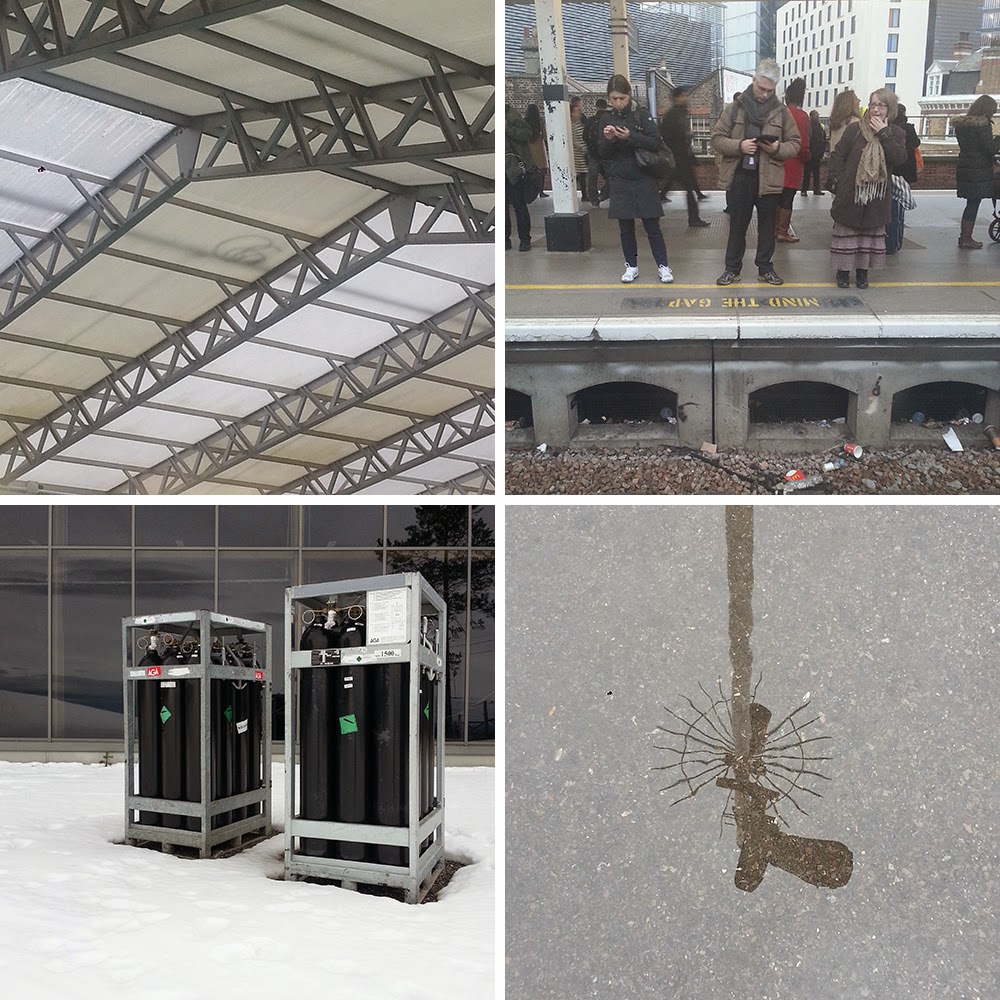There are now over 600 daily images on Instagram @paulcliffordartist. I use it to keep me motivated to produce artwork, and help me think about my photography, how it represents me and what it might mean to other people.
Talking to a few photographers lately, especially during my recent London Instagram show, I've been surprised at the range of opinions about the platform, and all the different ways it's used and viewed. So I thought I'd run through my own process here - you can see what you think.
Before we go on, I should let you know that I keep myself pretty ignorant about hashtags and their effects, and how Instagram chooses to share my work or create my news feed - and I know it's not straighforward. I just do my process and leave it at that. Any more, and I can see it falling behind or not being fun any more.
Once a day, every day
 |
| 600 daily images |
Now, with my daily posts, which I've kept up since March 2015, I know I'll be thinking about creative work for a few minutes every day, at least. Very important.
I don't take a picture every day, I tend to take a bunch and then ration them out over the next few days. That means I end up with a pool of images. The ones I like best tend to go on first, and as some get older and haven't been put on, it's time to admit that maybe those ones aren't so good and can be forgotten about.
I usually either post first thing in the morning or at lunch time (UK time). If I'm away it can depend on when I can get online at all - but I haven't missed a day yet!
Titles and hashtags
Sometimes a challenge and sometimes easy. Titles that come to me straight away, sometimes even while taking the photograph, tend to be the ones I like best. They might give a clue as to why I shot that image, they might be a line from a song, or they might tell you something about the subject of the image.
Along with the title I add 7 hashtags. These elaborate a bit on the picture, to add another level of interpretation to the visual image. I started with 7 because a friend who works in social media once told me that was the optimal number. Since then, I've found it a good way to briefly add context, so I've stuck with it.
Lately, I've started adding a further 15-20 hashtags as a comment. These may be in the same vein as the 7 'headline' tags, or they may be relevant feeds and keywords to try and extend the reach of my image. They're always appropriate to the image, not just irrelevant bait to get the image seen.
Designing the feed
 |
| The promo image for my show framed nicely a few weeks ago |
Posting daily means that kind of thing will only line up every 3 days anyway, so I'm not too fussed. I have had some images working nicely around each other by chance, and I do enjoy that!
There are also occasional noticable 'phases', such as a set of mountainside and nature pictures from Wales a month ago. I kept these discrete from the rest of my pictures, rather than mix rural and urban too disjointedly.
Checking new likes and followers
 |
| Keeping up... |
Like everyone, I get a lot of brands and shops liking and following me, plus the odd 'get more followers' junk, but in the main they are fellow photographers. Some are up my street, some not.
I think I feel a responsibility to those who have responded, a bit like replying to every fan letter maybe (I appreciate that finger tapping a heart is nothing at all like writing a letter by the way!).
Viewing my own personally curated collection
Every time I follow an account, their pictures flow into my news feed.
I've spoken to Instagrammers who will tactically follow accounts, and I get plenty of 'follow me and I'll follow you' comments, but personally I only follow people whose pictures I want to see in my image feed, simple as that.
That creates a unique set of flowing images every day that brings me a lot of pleasure. I feel an affinity with these photographers - like me, they're not headline names, but they do what they like to do and are kind enough to share it.
There are a handful of photographers I communicate with regularly, and I even met some at the events at my print show. Conversely, others post in foreign languages and characters that mean nothing to me, so their images literally speak for themselves.
I follow over 200 accounts - keeping up with all the pictures can be time consuming, especially as Instagram doesn't remember where you left off, so I have to scroll down to find the last one I saw. But I love to see all these very different and unique images from around the world.
__________________________
I think that's pretty much what I do on a daily basis - what do you do that's different?





























